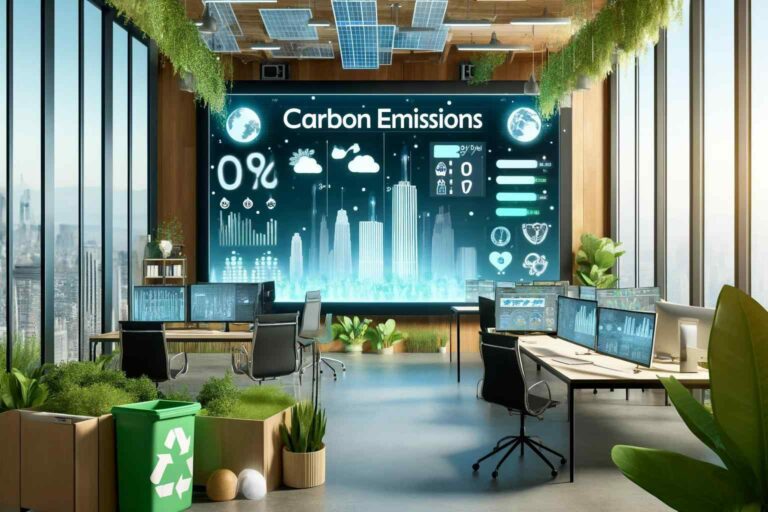
Understanding Scopes 1, 2 and 3: Introduction
Every Wednesday, Play It Green shares a business tip with our community and this week it is about understanding Scopes 1,2 and 3. Our weekly business tip is designed to educate and empower businesses to embrace sustainable change. These tips are not just about future-proofing your business; they’re about taking concrete steps towards becoming part of the climate solution.
By making these changes, businesses can not only reduce their environmental impact but also unlock a plethora of rewards. Today, we delve into a topic that is crucial for any business looking to make a real difference: understanding Scopes 1, 2, and 3 of carbon emissions. This knowledge is a cornerstone for implementing effective sustainability strategies and for ensuring that your business contributes positively to our planet’s health.
Let’s unpack these concepts together and explore how they can transform your approach to sustainability, setting your business on a path to not just thrive but lead in a green future.
Understanding Scopes 1,2 and 3: The Imperative of Reducing Carbon Emissions
Imagine a world where businesses lead the charge against climate change, turning the tide towards a healthier planet. This vision is not just a dream but a necessary path to avoid environmental and economic catastrophes predicted by experts. The role of businesses in this battle cannot be understated. From mitigating mass migrations due to rising sea levels to preventing the collapse of markets, the corporate world holds a key to significant change.

Recognising this, leaders worldwide are pivoting towards sustainability, integrating it into their core mission and strategy. Gone are the days when sustainability was a mere add-on to corporate social responsibility. Today, it is a business imperative, critical for survival and success.
Understanding Scopes 1,2 and 3: Unpacking the Three Scopes
To make meaningful changes, businesses must first understand where their emissions come from. This understanding is broken down into three categories or scopes, defined by the Greenhouse Gas (GHG) Protocol.
Scope 1: Direct Emissions
Direct emissions come from sources that are owned or controlled by the company. This includes the combustion of fuel in company vehicles or boilers and fugitive emissions, like refrigerant leaks from air conditioning. Direct emissions are often the first point of action for businesses looking to reduce their carbon footprint, as they are the most controllable.
Scope 2: Owned Indirect Emissions
Scope 2 emissions are indirect emissions from the generation of purchased electricity, heat, or steam. These emissions are considered indirect because they occur at the facility where the energy is generated, not at the business consuming it. However, they are “owned” in the sense that the business’s choice of energy source can directly influence these emissions. Transitioning to renewable energy sources is a key strategy in reducing Scope 2 emissions.
Scope 3: Other Indirect Emissions
Scope 3 emissions are the most comprehensive and challenging to address. They encompass all other indirect emissions that occur in a company’s value chain, including both upstream and downstream emissions. This can range from the extraction and production of purchased materials to the end-of-life treatment of sold products. Despite the challenge, tackling Scope 3 emissions offers a significant opportunity for businesses to make impactful environmental contributions.
Understanding Scopes 1,2 and 3: Why Measure All Three Scopes?
The importance of measuring and managing all three scopes cannot be overstated. Doing so provides a full picture of a company’s carbon footprint, identifying key areas for reduction and improvement. It also positions businesses as leaders in sustainability, enhancing their reputation and appeal to eco-conscious consumers and investors.
Moreover, with regulations on carbon emissions becoming more stringent and the global market shifting towards sustainability, companies that proactively manage their carbon footprints will navigate future challenges more effectively. They will also discover opportunities for cost savings, as many carbon reduction strategies, such as energy efficiency improvements and waste reduction, also lead to financial benefits.
Understanding Scopes 1,2 and 3: Practical Steps Towards Reduction
Reducing emissions across all scopes requires a strategic and comprehensive approach. Here are some actionable steps businesses can take:
Conduct a Carbon Footprint Assessment: Understanding your current impact is the first step. This assessment will highlight areas where emissions are highest and identify opportunities for reduction.
Set Science-Based Targets: Establish clear, measurable goals for reducing emissions in line with global efforts to limit warming. These targets provide direction and motivation for your sustainability initiatives.
Embrace Renewable Energy: Transitioning to renewable energy sources, such as solar or wind, can drastically reduce Scope 2 emissions.
Optimise Supply Chains: Engage with suppliers to encourage sustainability practices that will reduce Scope 3 emissions. This might include selecting suppliers with lower carbon footprints or collaborating to improve the efficiency of goods transportation.
Innovate Product Design: Consider the entire lifecycle of your products, from design to disposal. Designing products for longevity, recyclability, or minimal environmental impact can significantly reduce Scope 3 emissions related to product use and end-of-life.
Understanding Scopes 1,2 and 3: Wrap Up
Tackling Scopes 1, 2, and 3 of carbon emissions is not just a responsibility but a strategic opportunity for businesses. It’s a chance to lead in the global shift towards sustainability, attracting customers, employees, and investors who share these values. By understanding and acting on these scopes, businesses can reduce their environmental impact, cut costs, and build a resilient, future-proof operation.
As part of the Play It Green community, your business is already on the path to making a difference. Embracing the challenge of reducing carbon emissions across all scopes is a bold step forward. Let’s work together to create a sustainable future, proving that business success and environmental stewardship can go hand in hand.
If you want to start the process of measuring your business’s carbon footprint and setting a plan to reduce it, why not get in touch with Play It Green – we can introduce you to our partner EaaSi Carbon who does just that!!
Play It Green: Empowering Your Sustainability Journey
Ready to take your commitment to sustainability to the next level? Play It Green stands as your partner in creating positive environmental change. From educational resources on sustainable practices and signposting to sustainable services to initiatives like tree planting and social giving, Play It Green offers a holistic approach to environmental stewardship.
Join us in the journey toward sustainability—embrace eco-conscious practices and be a force for positive change in our world. All whilst staying relevant, meeting legislation and aligning with the values of today’s consumers and employees.







